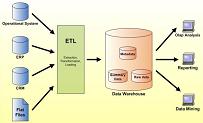 |
Back to the Data Model.
PRODUCTS
Ahmed :-has identified the requirements for the Products Table in the following terms :-
Products have the following categories:
Product Range:
As in private banking, asset management services are at the heart of the wealth management industry.
But wealth management is more than asset management.
It focuses on both sides of the client’s balance sheet.
Wealth management has a greater emphasis on financial advice and is concerned with gathering,
maintaining, preserving, enhancing and transferring wealth.
It includes the following types of products and services:
(a) Brokerage.
(b) Core banking-type products, such as current accounts, time deposits and liquidity management.
(c) Lending products, such as margin lending, credit cards, mortgages and private jet finance.
(d) Insurance and protection products, such as property and health insurance, life assurance and pensions.
(e) Asset management in its broadest sense: discretionary and advisory, financial and nonfinancial
assets (such as real estate, commodities, wine and art), conventional, structured and alternative investments.
(f) Advice in all shapes and forms: asset allocation, wealth structuring, tax and trusts,
various types of planning (financial, inheritance, pensions, philanthropic), family-dispute
arbitration – even psychotherapy to children suffering from ‘affluenza’.
(g) A wide range of concierge-type services, including yacht broking, art storage, real estate
location, and hotel, restaurant and theatre booking.
Barry says :-
The Business Rules state :-
1. Every Product has a Type, but is not in a Category or a Range. (Ahmed -is that right ?)
2. Some Product Types have sub-types but these are not modelled.
3. Modelling a Product requires simply a Product Type.
Recent reports state that the Swiss banks UBS and Credit Suisse must hold almost twice as much capital as set out in the new international Basel III standards, a report has said.
This would be at least ten per cent of risk-weighted assets, based on new global standards (Basel III), in the form of common equity.
In addition, the banks should hold another nine per cent, which could be contingent convertible (CoCo) bonds, taking the current total capital requirements to 19 per cent.
The new Swiss rules go well beyond the Basel III regulations, agreed last month, which require banks to hold a minimum of seven percent in the form of common equity.
This page defines Private Banking and the Business Rules that apply to the KPIs and BI Reports for Private Banking.
Wikipedia says Private Banking refers to financial services provided by banks to private high net-worth individuals investing sizable assets, usually over $2 million.
These Services usually involve involve buying and selling shares in order to maximise the return over a defined period of time within certain levels of risk.
Current trends are placing more emphasis on the transparency of these operations.
This has resulted in an increased demand for Business Intelligence.
This table defines the KPIs for BI Reports in a format that they can be reviewed and agreed with the Users.
| Nr |
KPI Item |
NAME |
DESCRIPTION |
DATA ITEMS |
DATE AGREED |
AGREED WITH |
| KPI 1 |
IRR |
Internal Rate of Return |
To be determined |
To be determined |
|
|
| KPI 2 |
NPV |
Net Present Value |
Number of Shares multiplied by the Share Price on the Date |
Date, Share holding count, Share Price |
|
|
| KPI 3 |
ROE |
Pre-Tax Return on Equity |
To be determined |
To be determined |
|
|
Barry has identified the 'Things of Interest' as follows :-
1. Client's Share Holding
2. Share Name
3. Share Price
4. To be determined
© DataBase Answers Ltd. 2010
|
|

